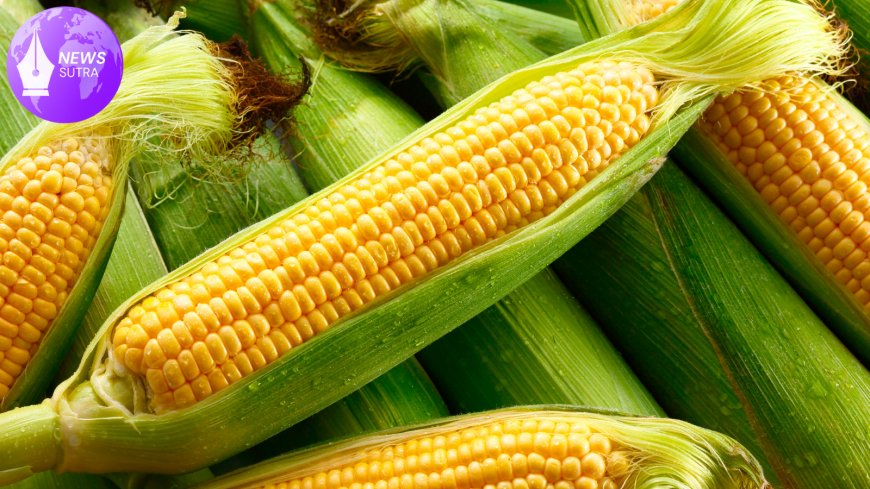Climate Change Intensifies Corn Production Challenges in the U.S.
Climate change is making U.S. corn farming riskier. Farmers face rising costs, unstable yields, and USDA models warn of steep declines in future production.

Corn farming — a cornerstone of U.S. agriculture — is facing mounting risks as climate change drives unpredictable weather patterns across the Midwest. Farmers in key corn-producing states like Iowa, Illinois, Nebraska, and Minnesota are reporting record-breaking heatwaves, erratic rainfall, and extended drought cycles, all of which are making corn production increasingly unstable.
According to newly released data from the U.S. Department of Agriculture (USDA), climate-driven weather variability could cut average corn yields by as much as 15% in some regions over the next two decades. This is a sharp contrast to previous projections that assumed relatively stable climate conditions.
Farmers on the Frontline: Unpredictable Seasons, Rising Costs
For farmers, the challenges are not abstract models but lived realities.
-
Mark Jensen, a fourth-generation farmer from Iowa, described the situation bluntly: “In 2024, we had floods that drowned part of our crop. This summer, we’re running irrigation nonstop because of drought. It’s whiplash farming — you never know what’s coming next.”
-
In Nebraska, Angela Martinez, who manages over 2,000 acres of corn and soybeans, reported rising costs of inputs. “Seed prices are higher, fertilizer is harder to plan for, and now crop insurance premiums are climbing because of all the climate risk. It’s getting harder to break even.”
These testimonies echo a broader trend: climate unpredictability is increasing production costs, reducing yield reliability, and threatening the financial security of small- and medium-scale farmers.
Data-Driven Forecasts: USDA Climate Models
The USDA has been developing advanced climate-yield forecasting models that combine historical production data with real-time climate simulations. The models suggest several key risks:
-
Temperature Sensitivity: Corn yields drop significantly once daily temperatures exceed 35°C, particularly during the critical pollination phase.
-
Rainfall Extremes: Both excessive rainfall and drought stress root systems, reducing overall yield stability.
-
Regional Shifts: Northern states like North Dakota and Wisconsin may see short-term gains due to longer growing seasons, while southern states face steep declines.
One USDA scientist involved in the research explained: “We’re seeing strong evidence that climate extremes — not averages — are driving yield losses. Even if the annual average looks manageable, one badly timed heatwave can wipe out weeks of growth.”
For more detailed forecasts, the USDA Climate Hubs provide region-specific projections and adaptation strategies.
Economic Implications: Food Prices and Supply Chains
The impact goes beyond farmers. Lower yields and rising production costs are expected to ripple through the supply chain:
-
Consumer Prices: Corn is a staple not only for human consumption but also for livestock feed and ethanol production. Declines in yields could raise prices for meat, dairy, and processed foods.
-
Export Markets: The U.S. remains the world’s largest corn exporter. Production instability could weaken its competitive edge against countries like Brazil and Argentina.
-
Insurance & Policy: Increased crop insurance claims are straining federal farm support programs, prompting discussions in Washington about expanding climate-resilient farming subsidies.
The National Corn Growers Association has already called for urgent investment in drought-resistant seed technology, improved irrigation systems, and carbon-smart practices that can help stabilize yields.
Adaptation Strategies: What Farmers Are Trying
While challenges mount, many farmers are adopting new techniques to mitigate risks:
-
Climate-Smart Seeds: Seed companies are racing to develop corn hybrids resistant to both drought and pests.
-
Cover Crops & Soil Health: Farmers are investing in soil enrichment practices to retain moisture and protect against erosion.
-
Precision Agriculture: Drones, satellite mapping, and AI-driven irrigation scheduling are helping farmers respond more quickly to changing field conditions.
Still, these adaptations often come with steep upfront costs, leaving smaller farms vulnerable compared to larger agribusiness operations.
Looking Ahead: Corn’s Uncertain Future
Experts caution that while technology may help farmers adapt, climate variability is here to stay. Without broader structural reforms in agricultural policy and more investment in resilient systems, the U.S. corn belt may struggle to maintain its historic productivity levels.
As Iowa farmer Mark Jensen summed it up: “We’re not just fighting weeds and pests anymore. We’re fighting the weather itself — and the weather is winning more often than we are.”











